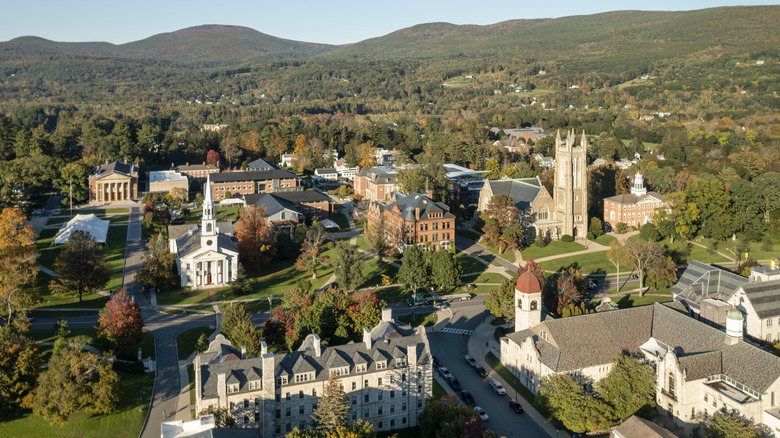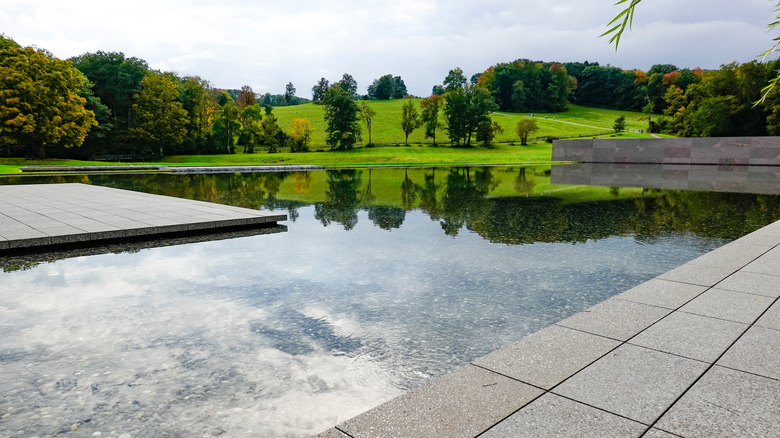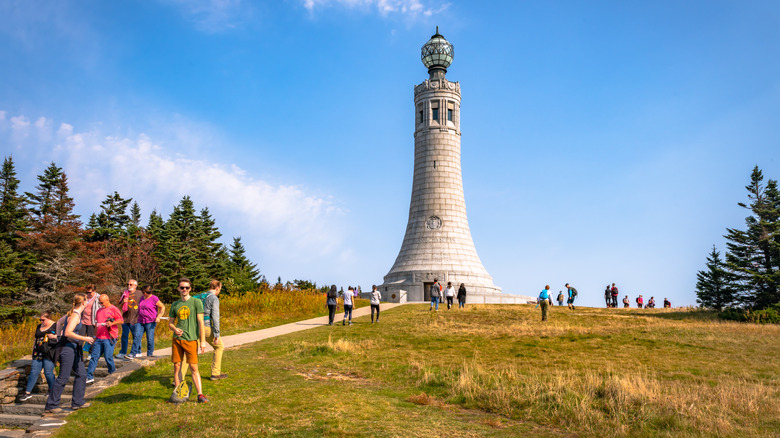Northern Massachusetts' Most Picturesque Art-Filled Destination Is Ideal For Outdoor Lovers
We may receive a commission on purchases made from links.
Tell someone you're from Massachusetts, and almost inevitably they assume you mean Boston. It's not much of an issue for those of us who do, in fact, hail from the Greater Boston area, but it can be a thorn in the side of Bay Staters from other parts of the state. Rightfully so, because there's so much more to Massachusetts than the Red Sox and Bunker Hill Monument; consider couples-favorite Berkshire County. The westernmost region of Massachusetts borders New York to the west, Vermont to the north, and Connecticut to the south, and it's about as far from city living as you can get in Massachusetts. The Appalachian Trail traverses Berkshire County for 90 miles between Connecticut and Vermont, revealing a rolling landscape of pastures, woodlands, rivers, and ponds, and crossing the Hoosic River about 3 miles west of Williamstown.
Often overlooked in favor of its better-known neighbor, Stockbridge, the Massachusetts town made famous by American artist Norman Rockwell's 1967 painting, "Stockbridge Main Street at Christmas," Williamstown has all the charm of Stockbridge without the maddening crowds. It's a quintessential New England college town, home to the esteemed Williams College. Established by the General Court of Massachusetts Bay Colony as West Hoosac in 1750, the original settlement was conceived as a strategic move to protect the northwest corner of the colony. The court required parties interested in purchasing a lot to clear 5 acres and to construct a dwelling measuring at least 15 feet by 17 feet. An interesting side note: In 1953, local historians built a replica of the original regulation houses at Field Park. The replica, known as the 1753 House, is owned and managed by the Williamstown Historical Museum.
All eyes on art in Williamstown
Fifteen years later, Williamstown was incorporated and named for Col. Ephraim Williams. The colonel, who died in a battle during the French and Indian War, had bequeathed a sum of money to West Hoosac on two conditions — incorporate the settlement as a town and establish a free school. That school, known today as Williams College, welcomed its first students in 1791. While Williamstown is a community with an abundance of things to do — explore nature, delve into the arts, dig into U.S. history — the presence of Williams College may be the most impactful piece of its cultural puzzle. College towns are often magnets for creative types, attracting artisans from every corner of the art world. Such is the case in Williamstown, where a thriving arts community brings vibrant, creative energy to the municipality. The collections at The Clark Institute and the Williams College Museum of Art rival those of major art institutes, including works by Renoir, Monet, John Singer Sargent, and Winslow Homer. The Clark Institute also collaborates with local artists on special projects, and both institutions regularly host events that are open to the community.
Williamstown is also an incubator of sorts for up-and-coming artists. Hollywood hotshots including Bradley Cooper, Sigourney Weaver, Christopher Walken, and Nathan Lane honed their skills at the Williamstown Theatre Festival, and up-and-coming artists studying at Williams College display their finished works at the Wilde Gallery in the Spencer Studio Art Building. Each spring, local artists open their studios to visitors during the annual Williamstown Artists Fine Art Sale and Studio Tour. For an art-inspired outdoor experience, check out The Guest House at Field Farm. The guest house, owned and managed by the Trustees of Reservations, is home to a 12-piece sculpture garden.
Nature is calling in Williamstown
Looking for outdoor activities a bit more challenging than a walk in the park? You're in the right place. We mentioned the iconic Appalachian Trail passes right by Williamstown. Hike — or drive the scenic byway (weather permitting) — to the top of nearby Mount Greylock. Take a stroll while taking in the view from the highest point in Massachusetts, and you can check "hike the Appalachian Trail" off your bucket list — as long as your personal list doesn't specify hiking the entire 2,175-mile expanse.
If scaling new heights isn't your thing, there are plenty of flatter trails in and around Williamstown. Ashuwillticook Rail Trail is a 12.7-mile trail built along the route of now-defunct railroad tracks. As a paved trail, it's a good place to cycle, in-line skate, and even cross-country ski when the snow cover cooperates. Managed by the Williams College Center for Environmental Studies, Hopkins Memorial Forest encompasses 2,600 acres of wooded forest crisscrossed by a network of trails that reach into New York and Vermont, including two that are open for horseback riding. One of the most popular hiking trails in Williamstown, Pine Cobble Trail is a bit of a challenge. Grab your hiking boots; the 1.6-mile trail tops out at 1,894 feet, but the sweeping view of the Hoosic River Valley makes it worth the effort.
Regarding lodging, options range from inns and B&Bs to well-known hotel brands. Located downtown within walking distance of Williams College and The Clark Institute, The Williams Inn opened in 2019 with a focus on offering an upscale experience. Other local dining venues include Mezze Bistro + Bar and Water Street Grille. For all-day breakfast, head to The Chef's Hat or pick up grab 'n' go at The Spring Street Market and Café.


